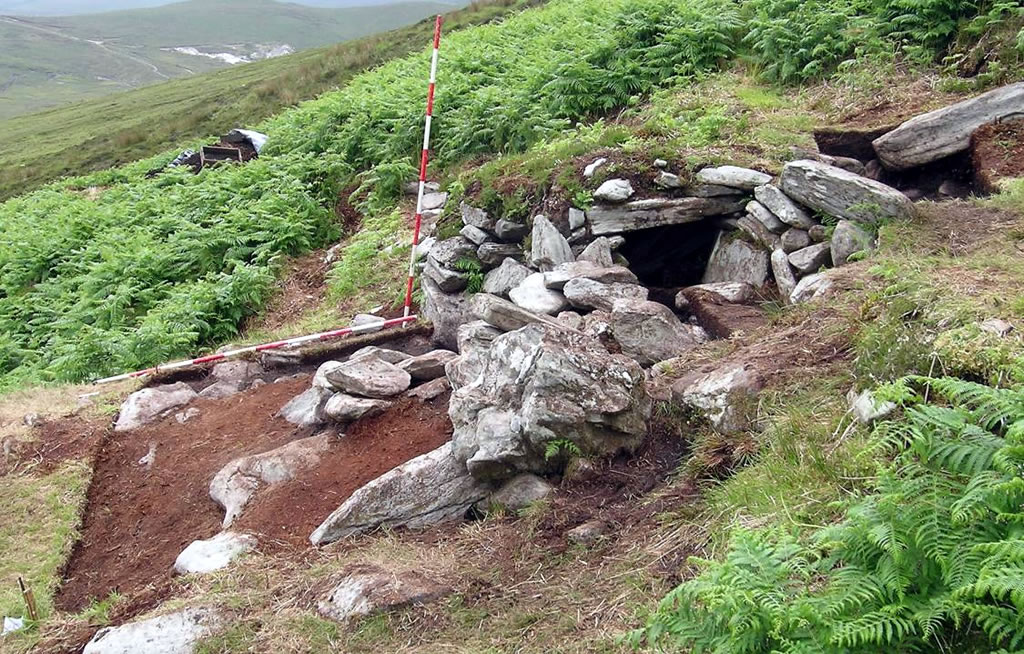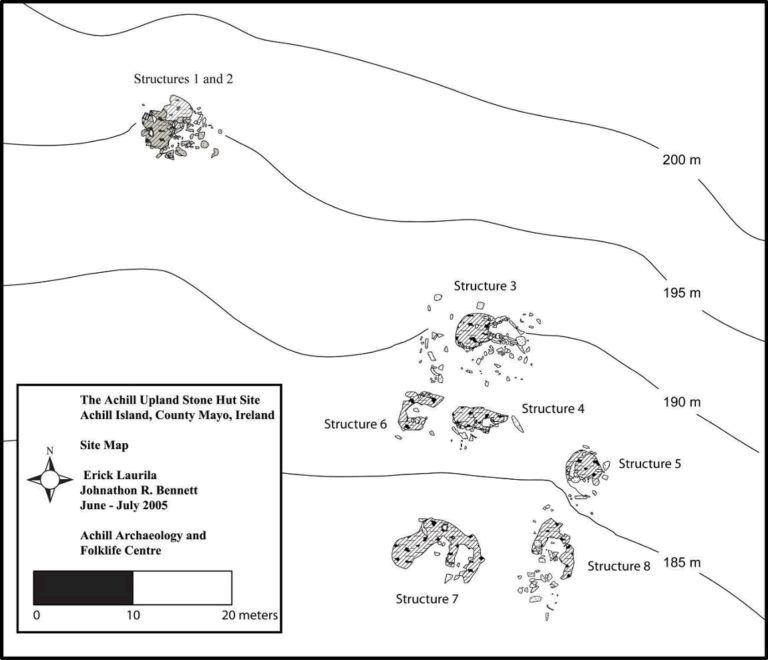Article © Copyright Achill Archaeological Field School

The Achill Upland Stone Huts are located on the southern slope of Slievemore Mountain Achill Island, County Mayo, Ireland. The site is characterized by a grouping of highly enigmatic stone chambered structures nestled within a curious upland geological environment. The site was first discovered in June of 2003 by students of the Achill Field School (AFS), and in January of 2005, the site was for the first time officially surveyed. In summer 2007 the site was excavated. The site includes eight standing structures in two localities separated by a ridge of Slievemore bedrock that halves the site naturally into East and West portions. Of the eight structures, four survive in an excellent state of preservation, possessing existing corbelled chambers and lintelled entrances; together with elevated entrance platforms and / or ‘causeways’ combined with substantial sub-surface structural foundation platforms. The other four structures present are in varying states of degradation though they do exhibit many of the features described above. Most of the structures are built directly against the mountainside and are semi-subterranean in nature in that the elevation of the interior floors extends below the surface of the ground on which they are built.

Excavations conducted at the Achill Upland Stone Huts during 2007, encompassed a total of 21 square metres spread among three separate trenches focused upon two structures, 3 and 5. These two structures were chosen for intensive archaeological investigation based upon their exceptional state of preservation. Excavations included the clearing of sod layers throughout the entirety of the defined 21 square metre area under investigation and the intense strategic excavation of approximately 11 square metres within these delineated areas. The excavations yielded no diagnostic artefacts, so the dating of the site remains unclear.